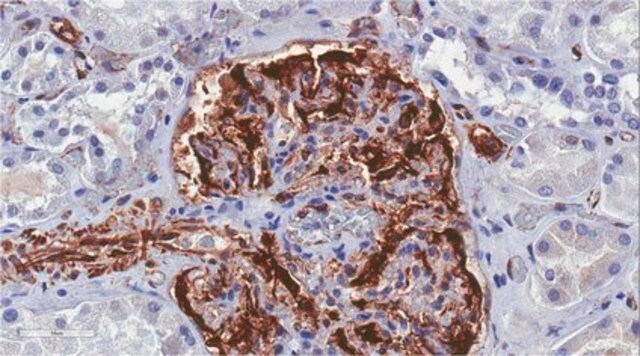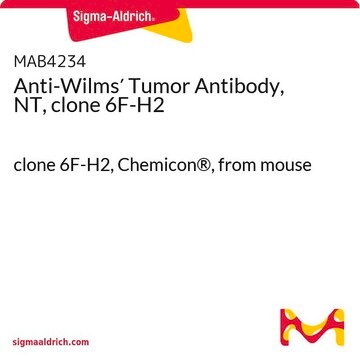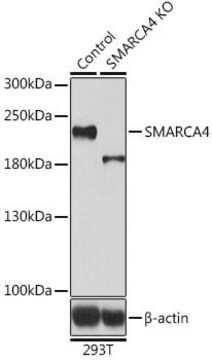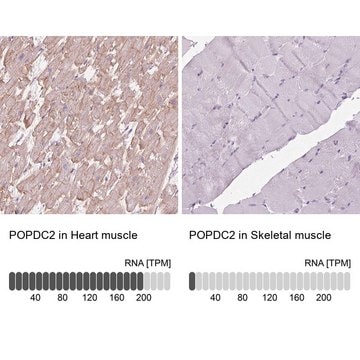0.1M Tris-glycine, pH 7.4, 0.15M NaCl, 0.05% sodium azide before the addition of glycerol to 30%.
05-753
Anti-WT1 Antibody, clone 6F-H2
clone 6F-H2, Upstate®, from mouse
Sinónimos:
Anti-AWT1, Anti-GUD, Anti-NPHS4, Anti-WAGR, Anti-WIT-2, Anti-WT-1, Anti-WT33
Seleccione un Tamaño
506,00 €
Seleccione un Tamaño
About This Item
506,00 €
Productos recomendados
origen biológico
mouse
Nivel de calidad
forma del anticuerpo
purified immunoglobulin
tipo de anticuerpo
primary antibodies
clon
6F-H2, monoclonal
reactividad de especies
human
fabricante / nombre comercial
Upstate®
técnicas
immunocytochemistry: suitable
immunohistochemistry: suitable
western blot: suitable
isotipo
IgG1
Nº de acceso NCBI
Nº de acceso UniProt
Condiciones de envío
wet ice
modificación del objetivo postraduccional
unmodified
Información sobre el gen
human ... WT1(7490)
Especificidad
Inmunógeno
Aplicación
Calidad
Descripción de destino
Forma física
Información legal
¿No encuentra el producto adecuado?
Pruebe nuestro Herramienta de selección de productos.
Opcional
Código de clase de almacenamiento
10 - Combustible liquids
Clase de riesgo para el agua (WGK)
WGK 1
Certificados de análisis (COA)
Busque Certificados de análisis (COA) introduciendo el número de lote del producto. Los números de lote se encuentran en la etiqueta del producto después de las palabras «Lot» o «Batch»
¿Ya tiene este producto?
Encuentre la documentación para los productos que ha comprado recientemente en la Biblioteca de documentos.
-
On what buffer is the antibody dissolved?
1 respuesta-
¿Le ha resultado útil?
-
Filtros activos
Nuestro equipo de científicos tiene experiencia en todas las áreas de investigación: Ciencias de la vida, Ciencia de los materiales, Síntesis química, Cromatografía, Analítica y muchas otras.
Póngase en contacto con el Servicio técnico








